- Joined
- Nov 9, 2014
- Messages
- 22,424
- Reaction score
- 34,868
Uronema marinum
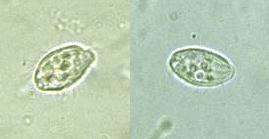
What You Need To Know:
* These are the red sores most often seen on chromis damsels; however it can afflict any fish.
* Treatment of choice is a 45 minute formalin bath (e.g. Quick Cure), followed by transfer into a new/sterile QT.
* Once in QT, it is very important to do followup treatment to ensure all of the parasites have been eliminated. This can be accomplished by dosing and food soaking metronidazole (e.g. Seachem Metroplex) for 10-14 days.
* There is no fallow period for Uronema. Once a tank has Uronema, it must be assumed that the disease can survive in there almost indefinitely.
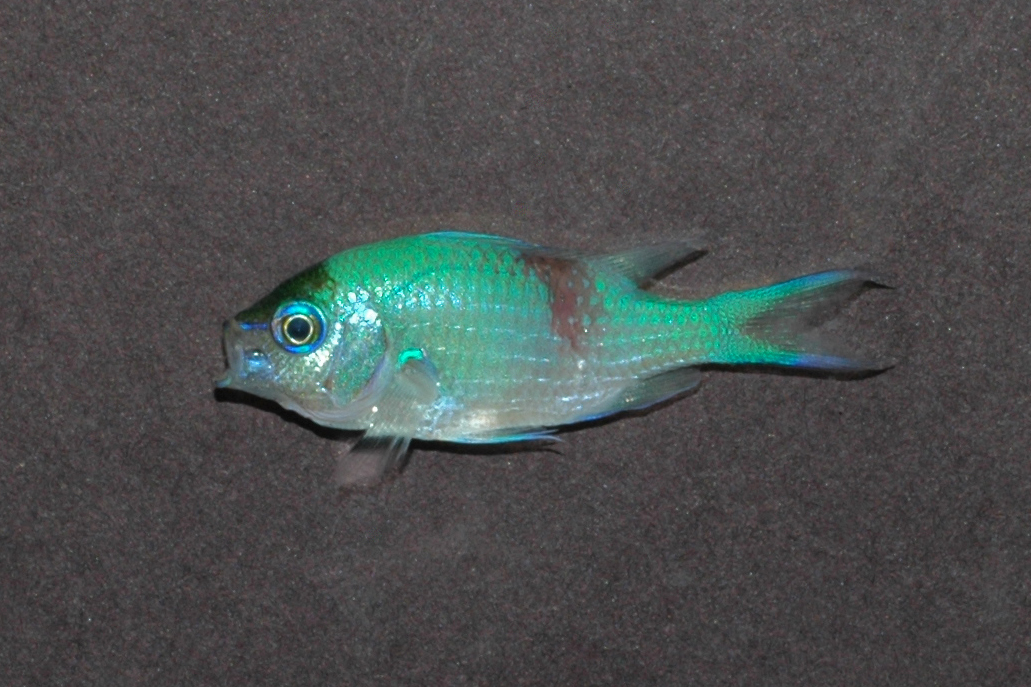
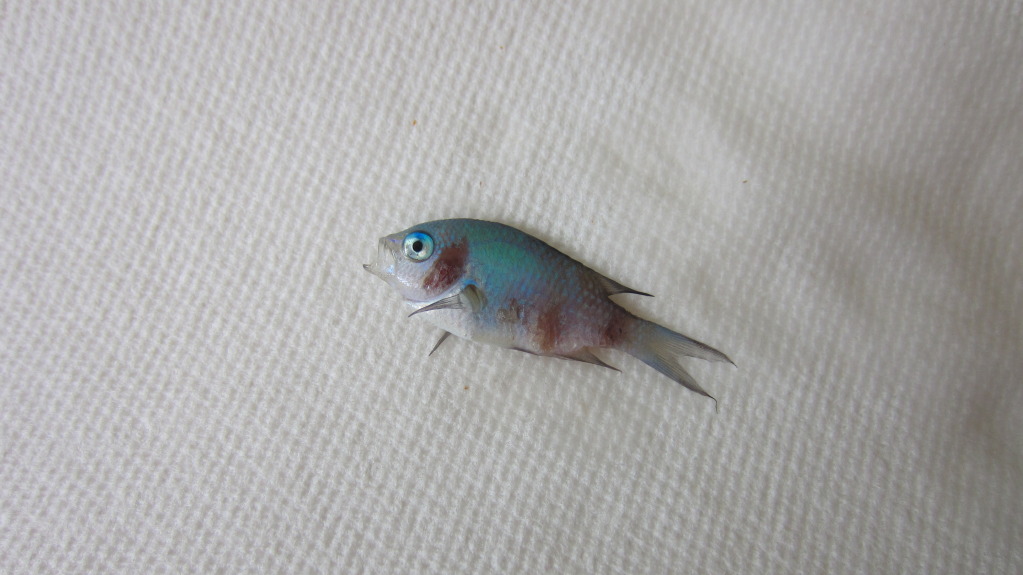
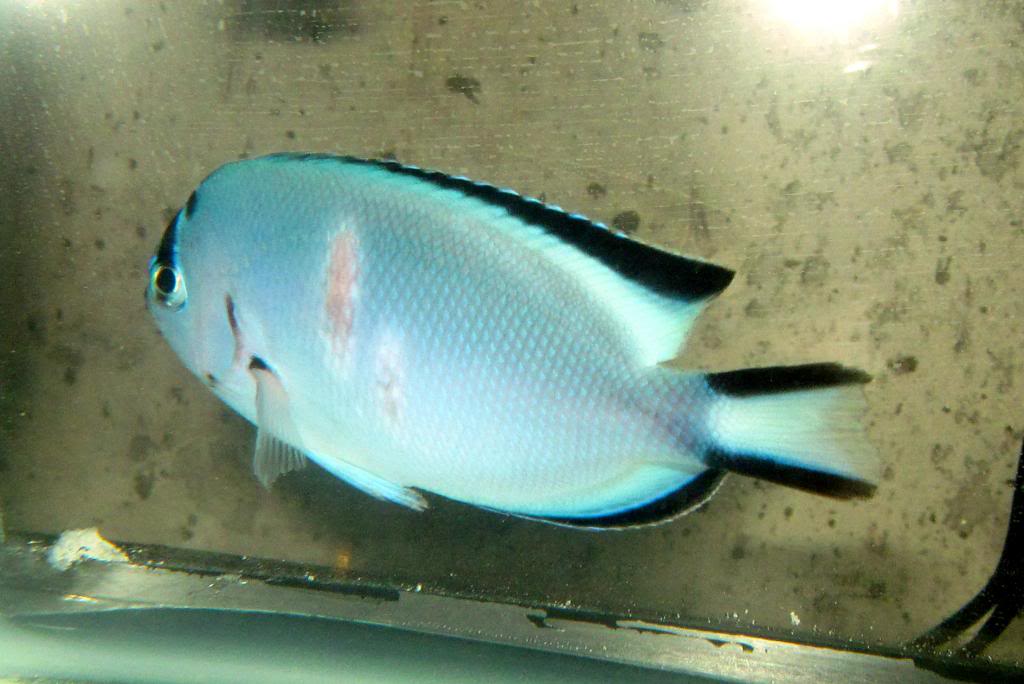
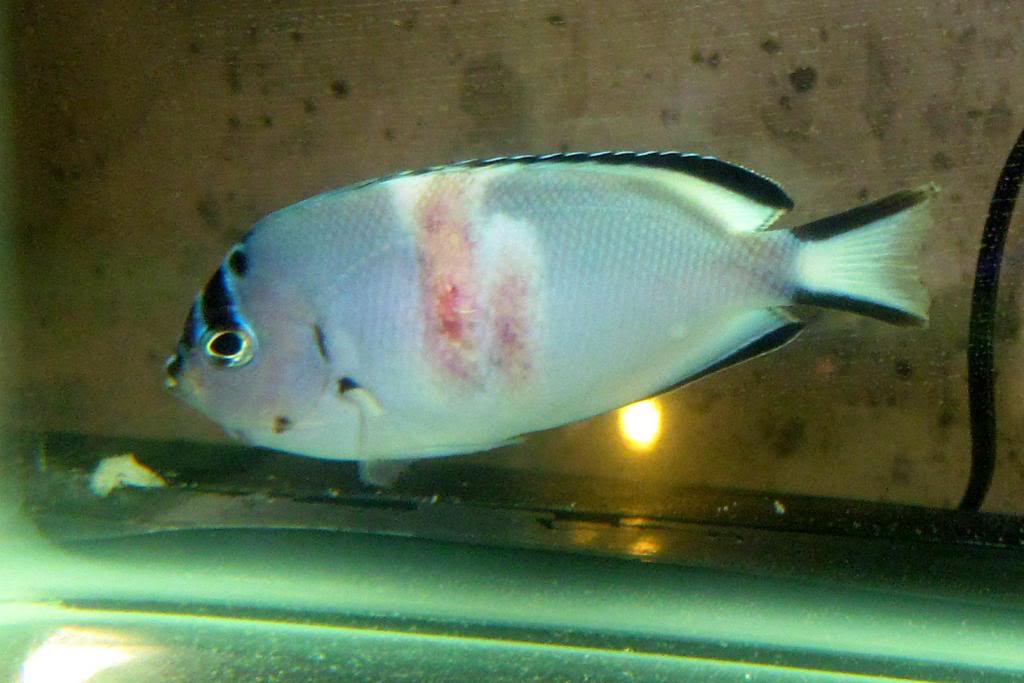
Additional Information
Uronema marinum is a ciliate parasite with a direct life cycle: It lives, feeds and reproduces directly on the fish (no encysted stage). However, there always exists the possibility that parasites can drop off into the water column and infect other fish. Having no encysted stage makes this pathogen easier to eliminate, but do not underestimate how fast killing Uronema can be. Especially with chromis damsels.
Two additional caveats to know about Uronema:
1. A fish infected with Uronema should also be fed food soaked with metronidazole because the disease can spread internally. Seachem Focus can be used to bind the medication to the food.
2. Uronema is a “free living” parasite which does not require a fish host. It can subsist off bacteria, dead tissue and (mainly) detritus. So, going fallow will not eradicate it. Most fish seem protected from it via their natural immune system; but for some reason, chromis and some other fish are not always afforded this protection. This is one pathogen you never want in your display tank. Probably the best way to manage its presence is to maintain a very clean aquarium with minimal detritus and avoid chromis damsels. This should keep the number of parasites low because you are eliminating the pathogen’s two main food sources.
Treatment Options – A formalin or Ruby Reef Rally bath are the two best options for providing relief to an infected specimen:
Formalin (45 min bath): https://humble.fish/formalin/
Rally (90 min bath): https://humble.fish/acriflavine/
Post bath, transfer the fish into a clean/sterile QT to prevent reinfection. Then dose Chloroquine Phosphate once (60 mg/gal) or metronidazole every 48 hours for 10-14 days thereafter. This is to ensure all of the parasites have been eradicated. Remember to also food soak metronidazole during the QT period in order to eliminate the internal parasites as well.
A 5 minute freshwater dip may provide temporary relief if you are unable to locate any of the aforementioned medications right away. It is a wise course of action to always transfer the fish into a new/sterile QT following each freshwater dip to prevent reinfection.
*** UPDATE:
If a fish is showing active signs (red sores) of Uronema, DO NOT use formalin or H2O2 on that fish. Both chemicals will burn the sores, and ultimately do more harm than good. (Formalin and H2O2 are still appropriate for fish you suspect may be carriers of Uronema, but not yet showing red sores.) If a fish is showing active signs (red sores) of Uronema, you have two options:
 I personally just euthanize the fish to prevent the disease from spreading.
I personally just euthanize the fish to prevent the disease from spreading.

What You Need To Know:
* These are the red sores most often seen on chromis damsels; however it can afflict any fish.
* Treatment of choice is a 45 minute formalin bath (e.g. Quick Cure), followed by transfer into a new/sterile QT.
* Once in QT, it is very important to do followup treatment to ensure all of the parasites have been eliminated. This can be accomplished by dosing and food soaking metronidazole (e.g. Seachem Metroplex) for 10-14 days.
* There is no fallow period for Uronema. Once a tank has Uronema, it must be assumed that the disease can survive in there almost indefinitely.




Additional Information
Uronema marinum is a ciliate parasite with a direct life cycle: It lives, feeds and reproduces directly on the fish (no encysted stage). However, there always exists the possibility that parasites can drop off into the water column and infect other fish. Having no encysted stage makes this pathogen easier to eliminate, but do not underestimate how fast killing Uronema can be. Especially with chromis damsels.
Two additional caveats to know about Uronema:
1. A fish infected with Uronema should also be fed food soaked with metronidazole because the disease can spread internally. Seachem Focus can be used to bind the medication to the food.
2. Uronema is a “free living” parasite which does not require a fish host. It can subsist off bacteria, dead tissue and (mainly) detritus. So, going fallow will not eradicate it. Most fish seem protected from it via their natural immune system; but for some reason, chromis and some other fish are not always afforded this protection. This is one pathogen you never want in your display tank. Probably the best way to manage its presence is to maintain a very clean aquarium with minimal detritus and avoid chromis damsels. This should keep the number of parasites low because you are eliminating the pathogen’s two main food sources.
Treatment Options – A formalin or Ruby Reef Rally bath are the two best options for providing relief to an infected specimen:
Formalin (45 min bath): https://humble.fish/formalin/
Rally (90 min bath): https://humble.fish/acriflavine/
Post bath, transfer the fish into a clean/sterile QT to prevent reinfection. Then dose Chloroquine Phosphate once (60 mg/gal) or metronidazole every 48 hours for 10-14 days thereafter. This is to ensure all of the parasites have been eradicated. Remember to also food soak metronidazole during the QT period in order to eliminate the internal parasites as well.
A 5 minute freshwater dip may provide temporary relief if you are unable to locate any of the aforementioned medications right away. It is a wise course of action to always transfer the fish into a new/sterile QT following each freshwater dip to prevent reinfection.
*** UPDATE:
If a fish is showing active signs (red sores) of Uronema, DO NOT use formalin or H2O2 on that fish. Both chemicals will burn the sores, and ultimately do more harm than good. (Formalin and H2O2 are still appropriate for fish you suspect may be carriers of Uronema, but not yet showing red sores.) If a fish is showing active signs (red sores) of Uronema, you have two options:
- Euthanasia: How to euthanize a fish
- 5 min freshwater dip + dose Metronidazole (Flagyl) every 48 hours for 14 days in a QT.
Last edited:























